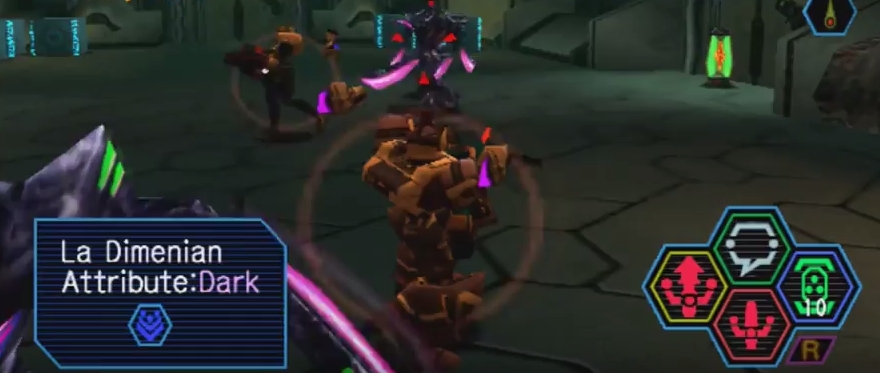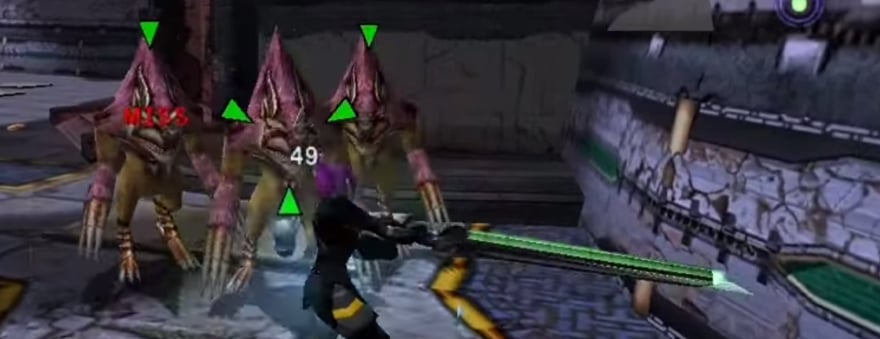
The Dreamcast was a brief but shining aberration in the gaming world. Coming along years after Sega had fallen out of its position as a top-runner in the console market, it represented the company’s last-ditch attempt to reclaim its former glory. While it failed to succeed in that respect and ultimately closed up shop in 2001 (ending Sega’s interest in the console market), the Dreamcast became a gaming cult favorite responsible for some of the most innovative titles ever made. Games like Jet Grind Radio, Space Channel 5, and Shenmue have remained fan favorites long after the Dreamcast’s demise, which shows the legacy that these dev teams left behind.
But perhaps the Dreamcast’s greatest gift to the gaming world wasn’t crazy taxis or space dancing but a surprisingly forward-looking approach to online gaming. In 2000, the Dreamcast took the first steps to bringing an online console RPG to market, and while it wasn’t a true MMO, it certainly paved the way for titles like EverQuest Online Adventures and Final Fantasy XI.
It was bold, it was addictive, and it was gosh-darned gorgeous. Ladies and gentlemen: Phantasy Star Online.
The year of the network game
“After we finished Sonic, we researched and experimented for a while and we reached a consensus that we wanted a game that uses the network for its basis. However at first, we weren’t sure what genre this game would be,” Sonic Team’s Yuki Naka said in 2008.
Forged in the fires of 1991’s Sonic the Hedgehog, the acclaimed Sonic Team continued a hot streak of Sega console classics through the decade. Following two big Dreamcast titles, Sonic Adventures and ChuChu Rocket, Yuki Naka and his team started investigating several possibilities, including online gaming. Ultimately, it was Sega Chairman Isao Okawa who sent down the proclamation from on high that 2000 would be “the year of the network game,” and so the Sonic Team settled on making that happen.
The problem was, it had never been done — at least not on consoles. In 2000, online gaming (including MMOs) was the sole domain of PCs. However, Okawa was convinced that it would be the future of the console market. While he was certainly right, it came a little too early for the rest of the market. Nobody, including Sonic Team, had any inkling as to how to make the technology work while selling the concept to console gamers.
That didn’t stop them. They were Sonic Team, after all.
The Dreamcast was shipped with a built-in modem, but up to that point, it had gone largely unused. Sonic Team had plenty of freedom to figure out how to utilize dial-up connectivity, no hard drive, and the console’s other tech to make a kick-butt game.
The first thing the team decided was that the game’s graphics would have to stand out, as many online titles of the time had subpar visuals. The second thing the team settled on was the resurrection of a popular Sega franchise — the long-running Phantasy Star series — and use it for this massive project (fun fact: PSO was originally called Third World before it acquired the Phantasy Star IP).
Sonic Team also created a mission statement of sorts when it came to this new game. It would allow players across the world to mingle and interact, it would focus on co-op play, and it would be the spark that ignited a Japanese online revolution.
Designed as an action-RPG that was more focused on group combat than any overarching narrative, Phantasy Star Online stripped RPGs of complexity in favor of bringing friends together for a singular purpose. “In the end, we decided that everything will be tied together into a common goal, similar to playing baseball or soccer. So in Phantasy Star Online, we decided that this ‘common goal’ will be for the people playing the game to adventure together,” Sonic Team’s Takao Miyoshi said.
Double-downing on Diablo
The end result of Sonic Team’s skillful work was a product that would have set off bells in the heads of many PC gamers — if they had been paying attention, that is. While it had sci-fi trappings, Phantasy Star Online was, for all intents and purposes, a console clone of Blizzard’s Diablo series. The setup of a player hub that would allow small teams to form and head out into the scary world beyond for endless sorties was already proven to be a hit in Diablo, so why not on the Dreamcast? It wasn’t a coincidence, either, as Phantasy Star Online’s main programmer was a self-professed Diablo addict.
Naka recalls how the effort of doing a console version of Diablo-esque gameplay was more difficult than anticipated: “The biggest issue with online games was memory. They require a lot of it, and the graphics suffer as a result. I was impressed with how smooth the gameplay of Diablo was, but it was a 2-D game. We wanted a game with Dreamcast graphics and the same level of gameplay as Diablo.”
Whatever the difficulties, Sonic Team pushed out a product that launched to strong reviews and an enthusiastic playerbase. Sega’s Isao Okawa believed in the idea of network gaming so much that he paid out of his pocket for a free year’s worth of internet access to be bundled in with every copy of PSO. This was a big deal because in 2000 dial-up in Japan was often charged by the minute — and broadband had yet to hit the scene.
Phantasy Star Online grew in popularity — and not just in Japan (as was expected) but across the globe. Unfortuantely, Okawa passed away mere days before PSO won the Japan Game Award for the year.
Pixelated pioneers
While nobody can fault Phantasy Star Online for a deep story, it did have a basic narrative in place to give players a reason their characters were slaughtering their way through an alien world.
The planet of Coral — your character’s homeworld — had become so trashed that the populace was fleeing en masse to a new world known as Ragol. The plan was for several “Pioneer” colony vessels to travel to the virgin planet to set up civilization, but when Pioneer 1 goes missing after a huge explosion, it’s up to the crew of Pioneer 2 (your ship) to investigate the disappearance.
Players were given choices of three races (Human, Newman, and Android) and classes (Fighter, Ranger, and Force). The classes mimicked standard RPG setups, with the Fighter/Warrior, Ranger/Archer, and Force/Wizard. However, one thing made classes more than just cliches: MAGs. A MAG was a robotic pet that could “evolve” into different forms depending on the player’s whims.
While most MMOs that we know and love feature persistent worlds, PSO would create private instances for small groups. All of the instances reset upon leaving, which meant that the core of the gameplay was players running the same levels over and over again. Oddly enough, while PSO was criticized as “boring” for those playing it offline (more on that later), people loved the same gameplay when it came packaged with fellow human interaction.
The tao of quirky game design
Phantasy Star Online had three interesting game design elements that are worth mentioning. The first is that the title could be played in an offline as well as online mode, which proved to be its downfall. The problem was that because of the offline option, the game was saved locally (versus on a remote server) and was fairly easy to modify and exploit. This led to no end of duping and hacking — and customer dissatisfaction.
On the positive side, PSO was certainly innovative when it came to connecting its players together no matter what their nationality or language. The game utilized a time system of “beats” (one beat per minute-and-a-half, roughly) that was syncronized globally, putting all players everywhere in the same time zone.
And while the Xbox had voice chat and most version supported keyboard input, many players were more than satisfied with PSO’s chat function that allowed you to pull words or symbols out of menus and then have them translated in the native tongue of your conversation partner. As a result, the language barrier was lowered, albeit not removed.
Going forward, one episode at a time
PSO is well-known for its long string of updates, “Episodes,” and adaptations, so we’ll just gloss over them quickly here. After PSO’s launch in 2000, Sonic Team transitioned to work on an improved version of the game known as Phantasy Star Online ver.2, which came out in 2001. Ver.2 raised the level cap and added new content as well as took the game from a free model to a subscription one ($15 for three months). As production on the Dreamcast came to a screeching halt in 2001, PSO ver.2 was ported to several other platforms: the PC, GameCube, and Xbox.
PSO Episode I & II added a whole new chunk of content when it came out for the GameCube in 2002 and the Xbox in 2003, although players who waited for the Xbox version got treated to voice chat as a major feature. It wasn’t until the next iteration, Episode III: C.A.R.D. Revolution, came out in 2003 that the series really tried something new (in this case, card-based combat with deck-building).
The PC got an improved version known as Blue Burst in 2005, which included the standard Episode I & II gameplay as well as a fourth episode.
Sonic Team tried to replicate its success with Phantasy Star Universe in 2006, but fans were much more lukewarm about the team’s efforts this time around. People balked at the monthly subscription and complained about lag, billing issues, and lack of content, leaving PSU to flounder in mediocrity for years.
Today PSO is a thing of the past. Console servers were shut down in 2008, and the PC version followed suit in 2010. In September of 2010, fans erupted into glorious shrieks of surprise when Sega announced the development of a “true” sequel to PSO, Phantasy Star Online 2. Unfortunately, PSO2 looks like it will never come out to the west, which means that the series’ legacy is fading fast in this hemisphere.
Did you play Phantasy Star Online back in the day? Let us know your memories in the comments!
 Believe it or not, MMOs did exist prior to World of Warcraft! Every two weeks, The Game Archaeologist looks back at classic online games and their history to learn a thing or two about where the industry came from… and where it might be heading.
Believe it or not, MMOs did exist prior to World of Warcraft! Every two weeks, The Game Archaeologist looks back at classic online games and their history to learn a thing or two about where the industry came from… and where it might be heading.
















